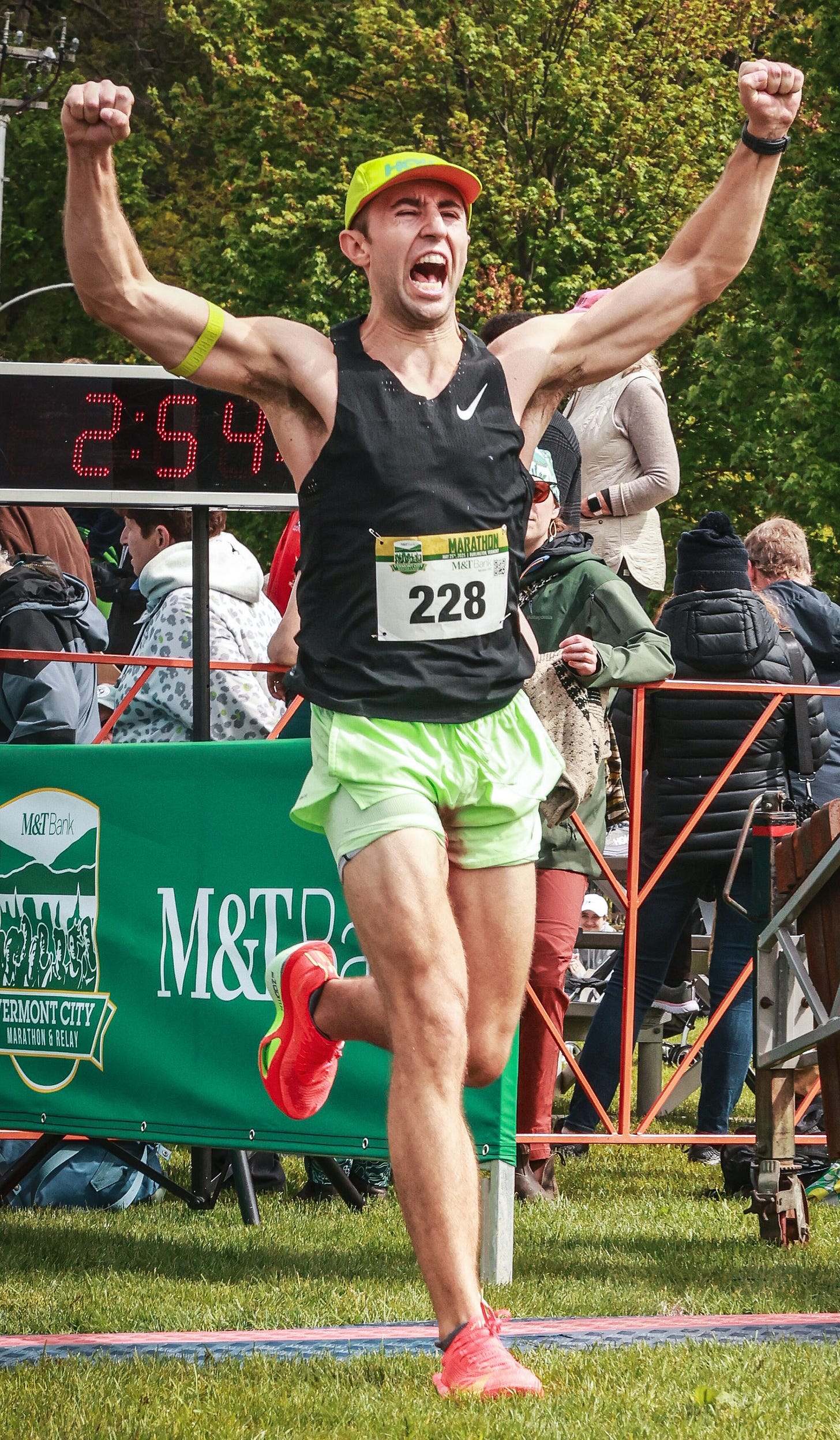Boston Bound (and Beyond!)
I dreamt big, worked hard, called my shot, and achieved one of my life’s goals.
In late May, I ran the Vermont City Marathon in 2:54:45, meeting the qualifying standard for the Boston Marathon by fifteen seconds and eclipsing my personal record by nearly twenty minutes.
I previously detailed my approach in February. The cornerstones of my 23-week training block included:
Largely training within target heart rate ranges rather than aiming for specific pace ranges
Completing the majority of training at a lower, aerobic effort (“Zone 2”)
Utilizing the treadmill for more controlled sessions and to maintain adequate volume, especially during inclement weather
Optimizing my carbohydrate and electrolyte fueling strategy
I also wrote about the role of twice-weekly resistance training sessions, which were largely curtailed due to constraints in my schedule. Their exclusion was apparently not to my detriment.
Although I qualified for the Boston Marathon, the Boston Athletic Association (BAA) reminds runners that “… achieving one's qualifying standard does not guarantee entry into the event, but simply the opportunity to submit a registration application.”
The overall field of runners is limited to 30,000 and only those “… who are the fastest among the pool of applicants in their age and gender group will be accepted.”
Last year, the qualifying standard for my cohort (males aged 18-34) was five minutes slower at 3:00. Despite this demarcation, applicants on average needed to finish almost seven minutes faster than their cohort’s standard to be accepted. In other words, my cohort needed to run a marathon closer to 2:53 to actually be accepted to race in Boston.
While I take great pride in my 2:54:45, which is a bona fide Boston-qualifying finish, it remains doubtful that I will be toeing the line in Hopkinton next April.
In 2027, the BAA will further restrict eligibility parameters by imposing a time penalty for courses with a net elevation loss of 1500 feet or more, ranging from five to ten minutes. Courses with net losses greater than 6000 feet will not be considered at all.
The REVEL Race Series, which exclusively hosts downhill marathons, are likely to see their participation decrease substantially after these changes go into effect. Their most egregious is Big Cottonwood, featuring a net elevation loss of 5242 feet, on which a penalty of ten minutes would be placed by the BAA.
With a field size of 45,000, the Chicago Marathon offers me more hope, at least for the time being. For this year’s running, race organizers are unambiguous— you can guarantee your spot in the marathon “if you meet the marathon qualifying standards,” which for my cohort was also 2:55:00.
Chicago’s standards for 2026 have yet to be announced, but God willing they will remain unchanged, and I will compete in my first World Marathon Major in October 2026.
Having reached this major milestone, where do I go from here?
True to form, I have even more audacious goals planned, including:
Actually being accepted to run in the Boston Marathon
Qualifying for the New York Marathon by running a marathon of 2:53:00 or faster
Receiving a complimentary entry to a marathon as an “elite runner.” (Usually requires a previous marathon finish of 2:45:00 or faster.)
Running all six World Marathon Majors
Breaking 2:30:00 (Assuredly never going to happen, but a nice, big, healthy dream nonetheless.)
In time, I will write about my updated strategy to make progress towards these sky-high aims.




You - Always Awesome/Can do! Will do!! Keep your eyes all over the prize
See you in Chi ;)